Crescent Moon and Star Spiritual Meaning Islam: Faith!
The crescent moon and star symbol holds significant spiritual meaning in Islam, representing faith, guidance, and the rhythm of life. This emblem appears on numerous flags and in Islamic art, highlighting its importance in the Muslim world.
In Islamic tradition, the crescent moon, known as Hilal, marks the beginning of the lunar months including the start of Ramadan, the holy month of fasting.
The crescent and star are often seen together, though the star is not as religiously significant as the crescent. It is believed to reflect the light of knowledge or represent the bright future after darkness akin to the dawn that follows the night.
Together, they symbolize the following aspects:
While the crescent moon and star are not inherently religious symbols in Islam, they have come to be associated with the faith and its community through their widespread adoption.
The crescent moon and star, while culturally significant, remind us that symbols can transcend their origins to become powerful representations of faith and identity in the Islamic world.
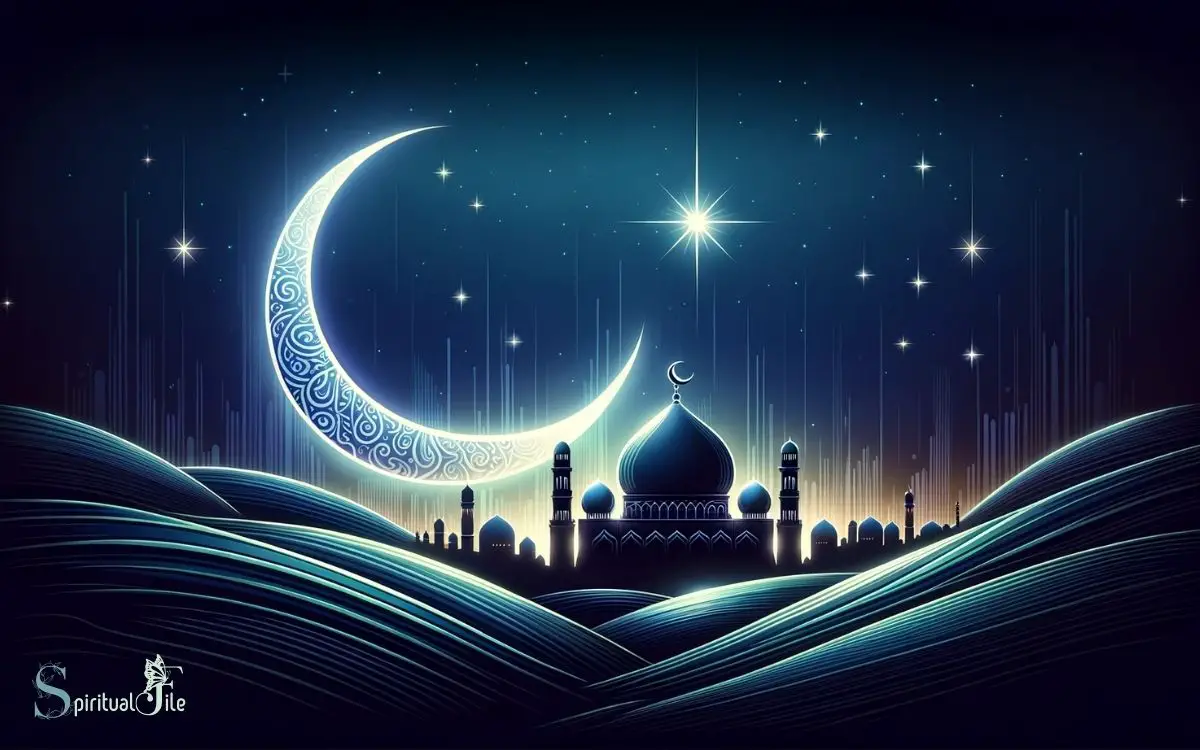
Key Takeaway
Symbolic Origins in Islam
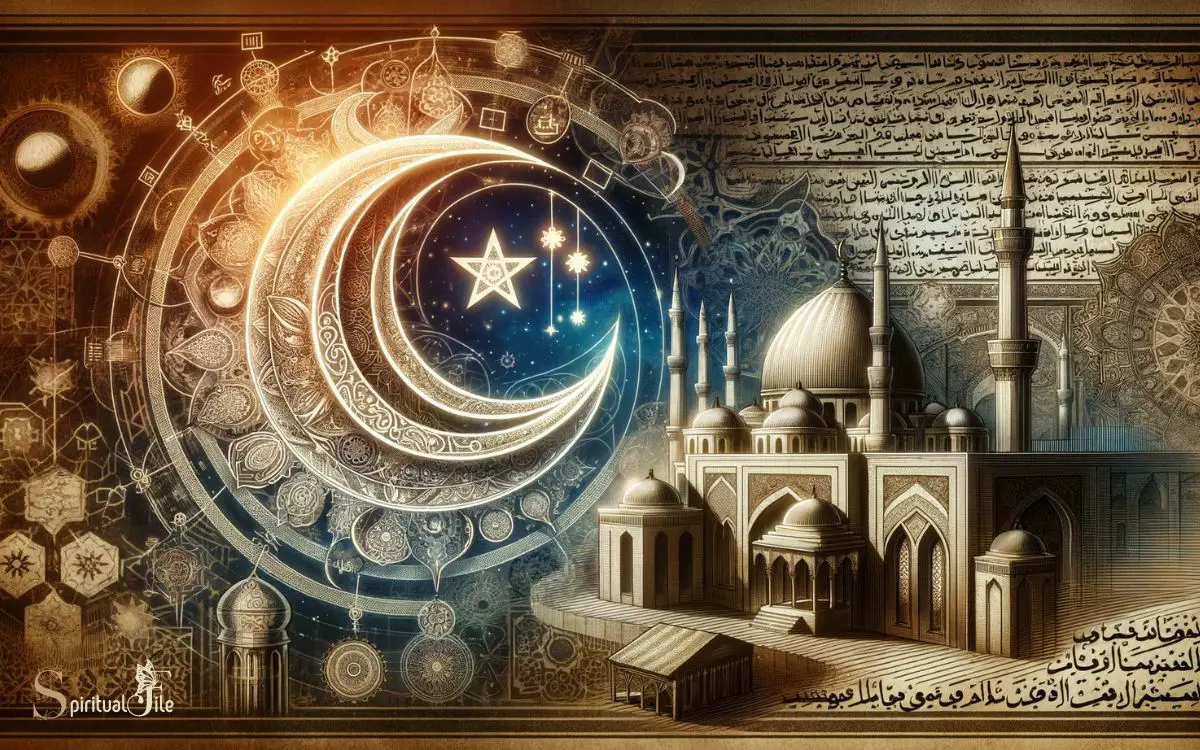
We’ll explore how the crescent moon and star became potent symbols within Islamic tradition, tracing their origins to early historical and spiritual contexts. These symbols predate Islam but were appropriated and reinterpreted within its theological framework.
The crescent moon, which marks the beginning of the lunar month, holds particular significance in the Islamic calendar, defining the start of important events like Ramadan and Eid.
Similarly, the star has been associated with guidance, reflecting the story of the Prophet Muhammad’s night journey.
Though not universally adopted or prescribed by religious texts, the crescent moon and star resonate deeply with Islamic culture and identity.
With this understanding of their symbolic beginnings, let’s delve into the historical significance that cemented their place in Islamic society.
Historical Significance
As we examine the crescent moon and star’s journey through history, it’s evident that their meanings have evolved alongside the societies that embraced them.
Their adoption by empires, particularly during the rise of the Ottoman Empire, marked a significant shift in their representation and influence.
We’ll analyze how these symbols transcended their initial contexts to gain prominence in Islamic culture and political identity.
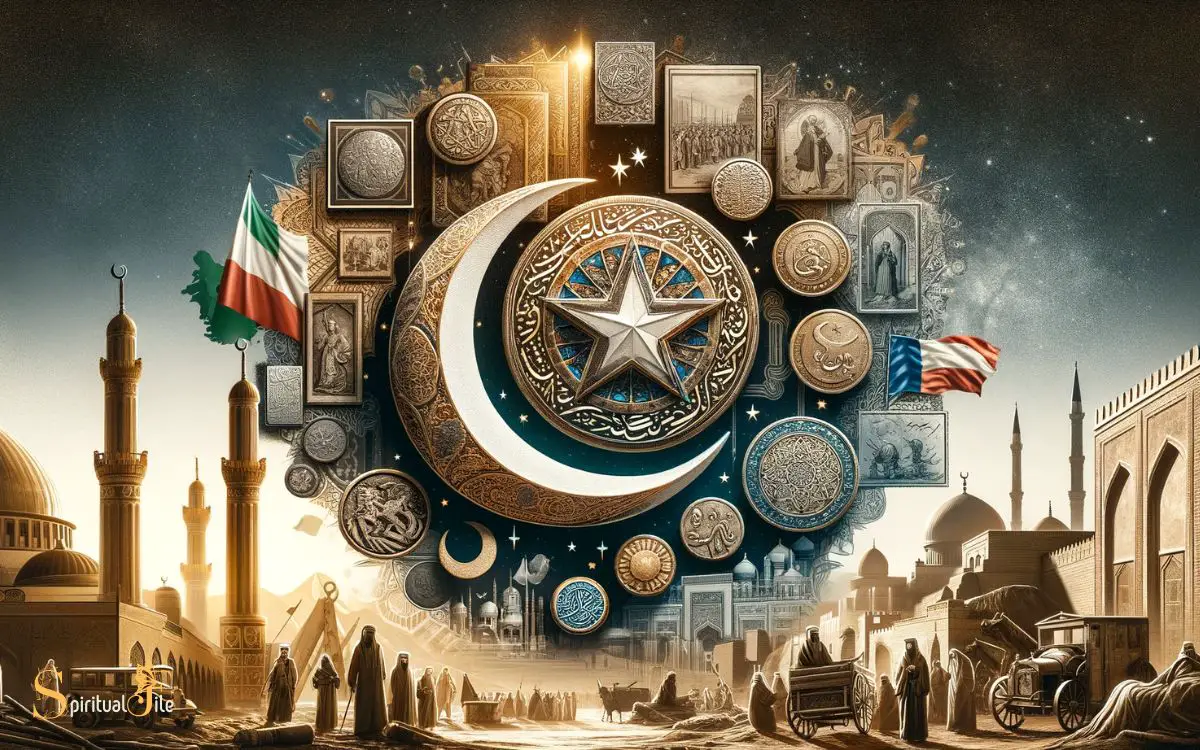
Symbolic Origins
We must delve into the rich tapestry of history to understand the crescent moon and star’s deep-rooted significance in Islamic culture.
This emblem, though not religiously prescribed, has become associated with Islam and its followers over centuries.
Its origins are not definitively Islamic; rather, they trace back to ancient civilizations like the Ottomans, who adopted it as a symbol of sovereignty and strength.
The crescent moon, representing progress and the illumination of the dark night, and the star, symbolizing light and guidance, were harmoniously united.
Over time, these celestial icons were embraced by Muslim communities, reinforcing a collective identity.
Their symbolic resonance has transcended mere decoration, encapsulating aspirations, unity, and a spiritual connection to the cosmos.
Empire Adoption
Our exploration of the crescent moon and star’s symbolism reveals its historical adoption by empires as a mark of power and civilization.
This emblem transcends mere decoration; it’s infused with profound connotations that empires have leveraged to assert their dominance and cultural identity.
To convey a deeper meaning for the audience, consider:
- Legitimization: Empires often adopted the crescent and star to legitimize their rule, suggesting a divine favor or connection.
- Unity: The symbol served to unify diverse peoples under a single empire, providing a common identity.
- Heritage: By associating with the crescent and star, empires connected themselves to a rich historical and cultural lineage, enhancing their prestige.
These points reflect an informed, analytical perspective that respects the symbol’s complexity and the audience’s desire for understanding.
Theological Underpinnings
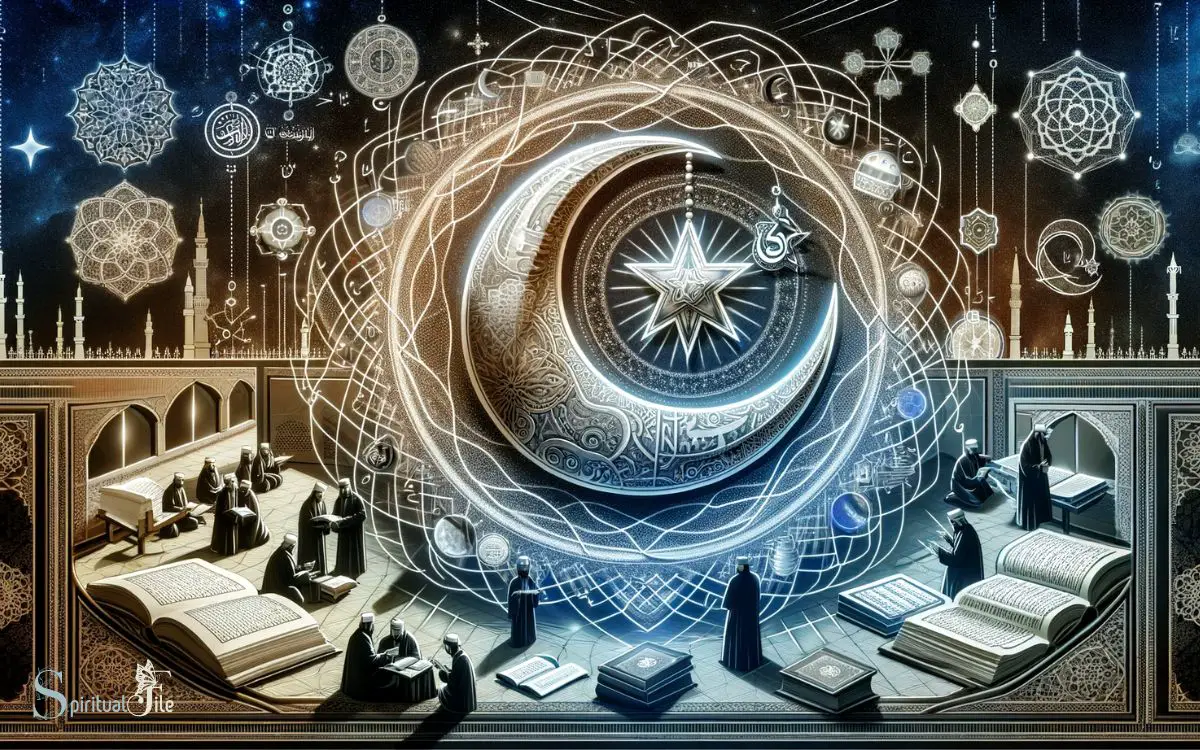
Exploring the crescent moon and star’s presence in Islamic tradition, we’ll delve into the symbols’ theological roots that are deeply woven into the fabric of Muslim belief.
While these icons are not explicitly outlined in foundational texts, their resonance with Islamic theology stems from broader religious themes.
The crescent moon signifies the lunar nature of the Islamic calendar, marking the beginning and end of months, especially Ramadan. The star, often linked to the story of the Prophet’s night journey, represents guidance and light.
Together, they encapsulate a sense of cosmic order and divine navigation. For us, this symbolic interplay highlights God’s sovereignty over time and the universe, reinforcing our faith in the celestial orchestration of life’s rhythms.
Cultural Connections
Beyond the theological implications, the crescent moon and star hold a special place in various cultural practices within the Muslim community.
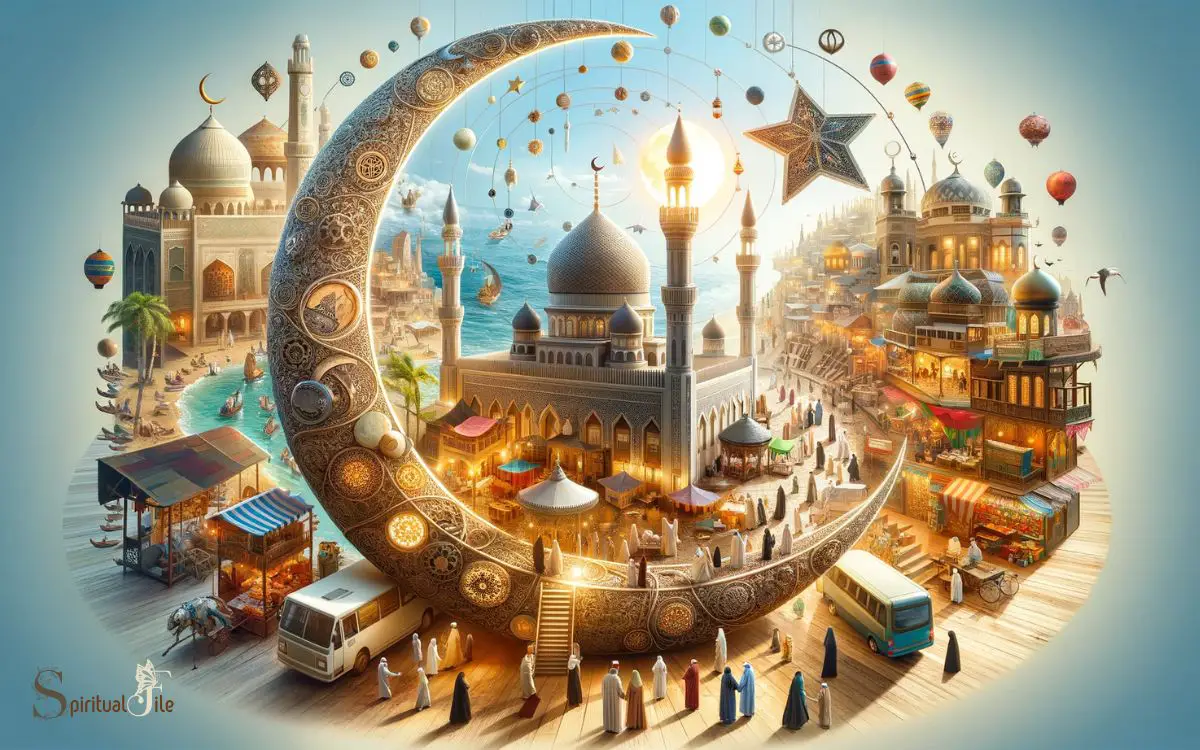
These symbols are not just emblems of faith, but also weave themselves into the fabric of everyday life:
- They adorn national flags, symbolizing unity and faith across multiple Islamic nations.
- During Islamic festivals, the crescent moon and star are often central to the decorations, reinforcing a sense of communal identity.
- In architecture, you’ll find these symbols gracing mosques and monuments, serving as a reminder of the divine.
We find these symbols imbued with layers of meaning, resonating with our shared heritage and values. This cultural resonance beautifully complements the lunar calendar’s role in organizing our religious observances, which we’ll explore next.
Lunar Calendar Relevance
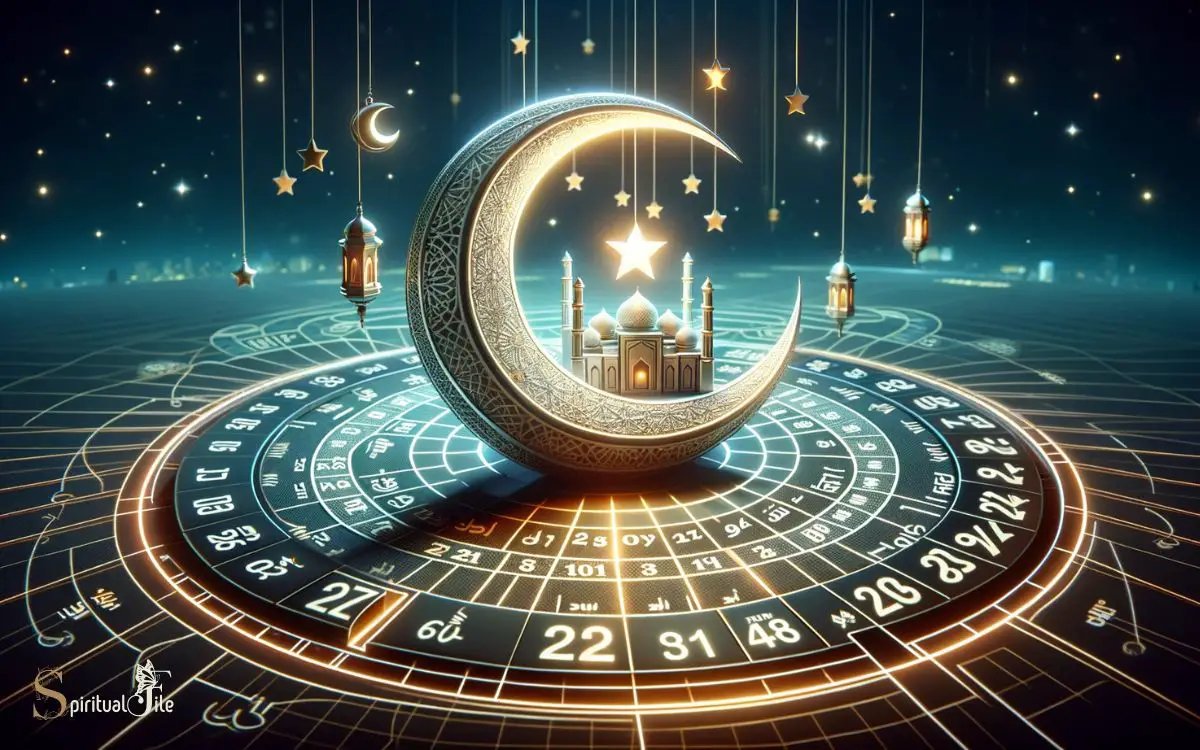
We can’t overlook the crescent moon’s pivotal role in the Islamic lunar calendar, which dictates the timing of religious festivals and observances.
This calendar is based on the phases of the moon, and it’s essential for determining the dates of significant events such as Ramadan, Eid al-Fitr, and Eid al-Adha.
The sighting of the crescent moon marks the beginning of each month, embedding its image deep into the spiritual and communal life of Muslims.
Our observance of this celestial body ensures that we remain in sync with a timekeeping system that honors the rhythm of the natural world.
This adherence is not just a matter of tradition, but a profound expression of faith and a testament to Islam’s enduring connection to the cosmos.
Ramadan and Worship
Observing the crescent moon, we’re reminded of the commencement of Ramadan, a month where we engage in heightened worship and reflection.
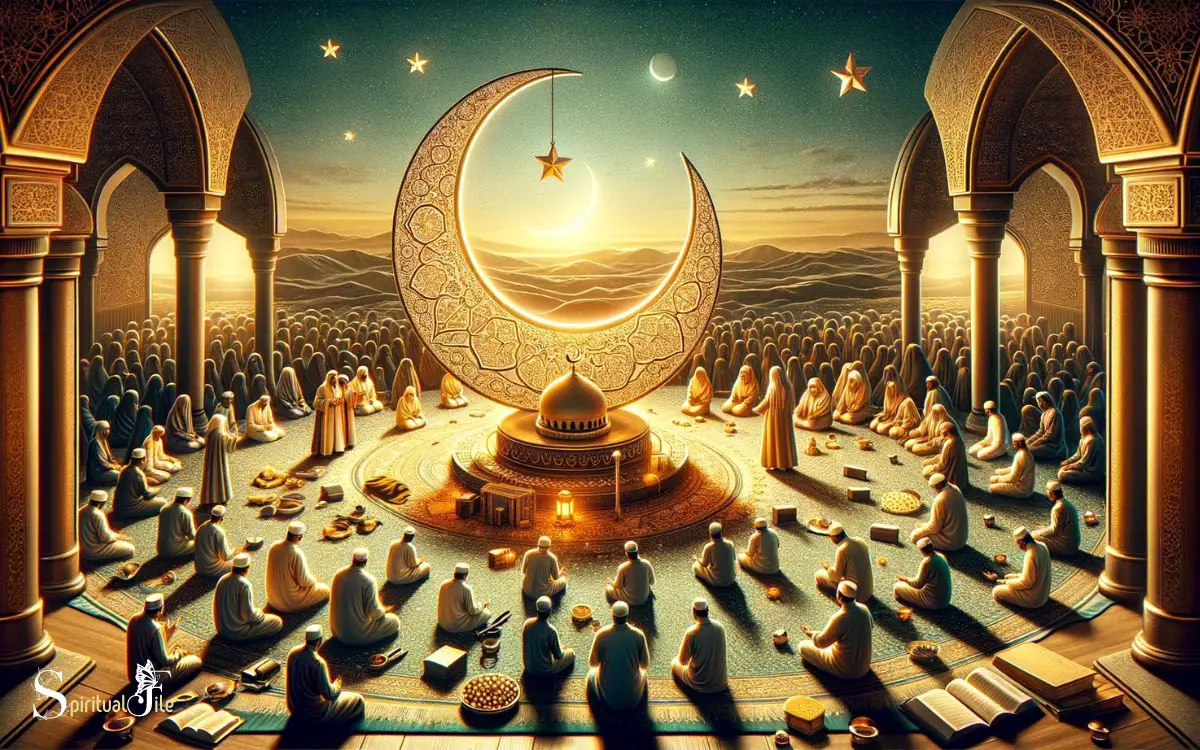
This period’s significance is multifaceted, deeply embedded in Islamic spirituality and practice:
- Fasting: We abstain from food and drink from dawn to dusk, a discipline that purifies the soul and brings us closer to God.
- Prayer: We increase our prayers, particularly the Taraweeh, seeking to strengthen our connection with the divine.
- Charity: We’re encouraged to give more generously, embodying the spirit of compassion and community essential to Islam.
Mysticism and Interpretations
Our exploration of Ramadan’s spiritual landscape leads us to delve into the mystical interpretations of the crescent moon and star in Islam.
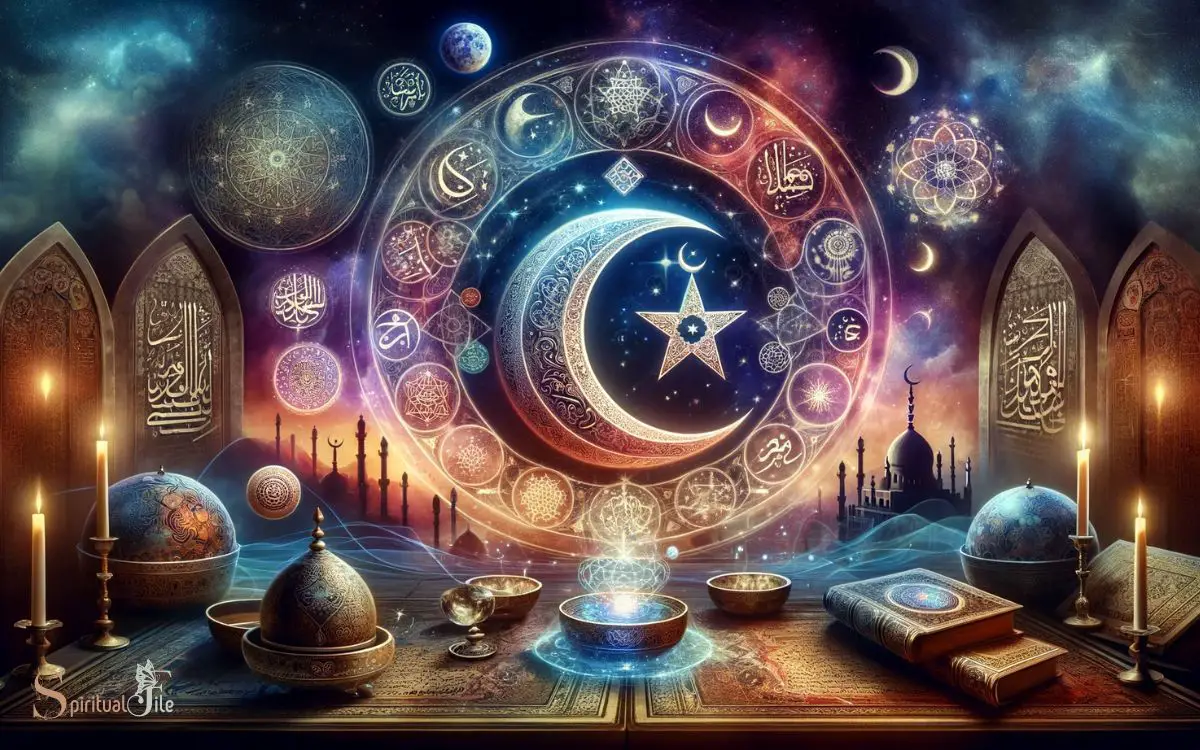
Within Islamic mysticism, or Sufism, symbols often carry layered meanings, inviting contemplation beyond their historical or political significance.
| Aspect | Crescent Moon | Star |
|---|---|---|
| Symbolism | Renewal | Guidance |
| Mystical Significance | Inner Growth | Divine Light |
| Sufi Interpretation | Spiritual Journey | Illumination |
In this context, the crescent represents potential and the cyclical nature of spiritual growth, mirroring the soul’s journey towards enlightenment. The star, meanwhile, is regarded as a beacon of divine light, guiding seekers on their path.
Modern Usage and Perception
The crescent moon and star symbol has evolved in modern times, becoming a ubiquitous emblem of Islamic identity and faith that we often see adorning flags, mosques, and various cultural artifacts.
It’s not just a relic of the past, but a living icon that continues to resonate with Muslims around the world.
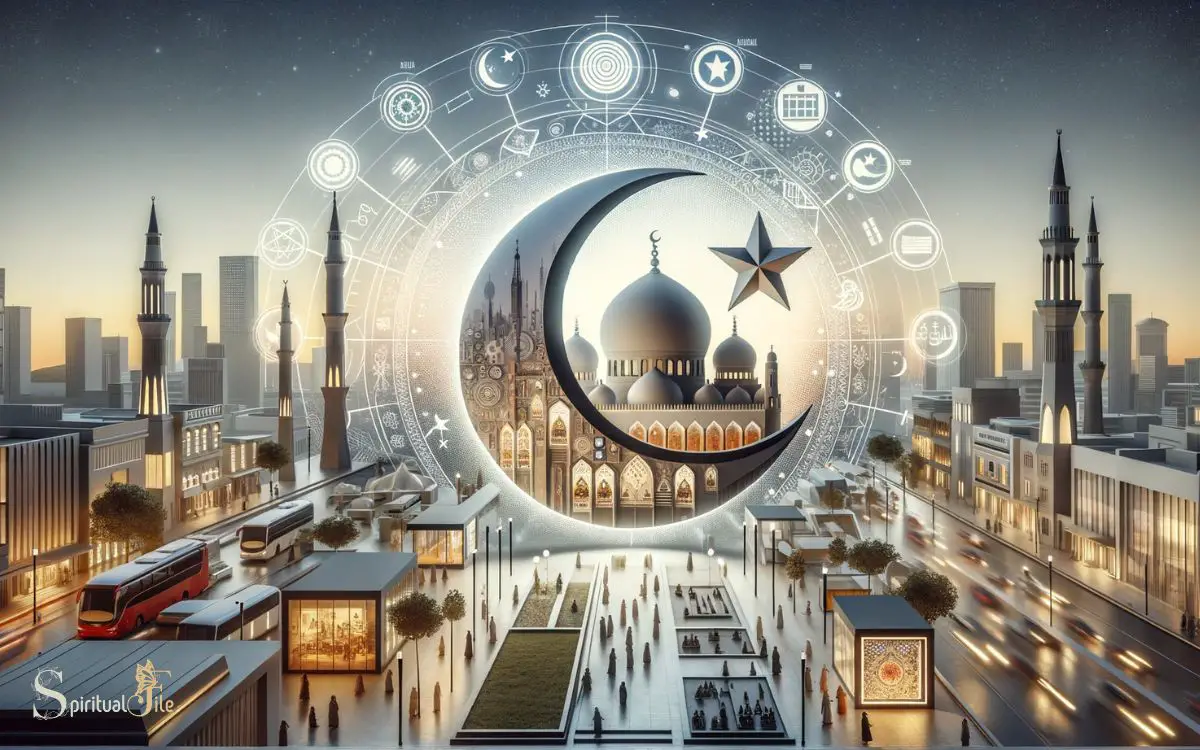
Here’s how it serves a deeper meaning for us:
- National Identity: The symbol often represents the Islamic heritage of a nation, instilling a sense of unity and pride among its citizens.
- Cultural Significance: It signifies the widespread influence of Islamic art and architecture, reflecting a rich cultural history.
- Faith and Community: For many, it is a powerful reminder of their faith and the shared bonds within the Muslim community.
Conclusion
We’ve explored the crescent moon and star as more than mere symbols; they are deeply woven into the fabric of our Islamic heritage.
While some may argue these symbols have pre-Islamic origins, we recognize their integration into Islamic culture has imbued them with new, profound meanings.
They guide our lunar months, enrich our religious practice, and serve as a spiritual beacon in our modern lives, reflecting Islam’s enduring legacy and our collective identity.






